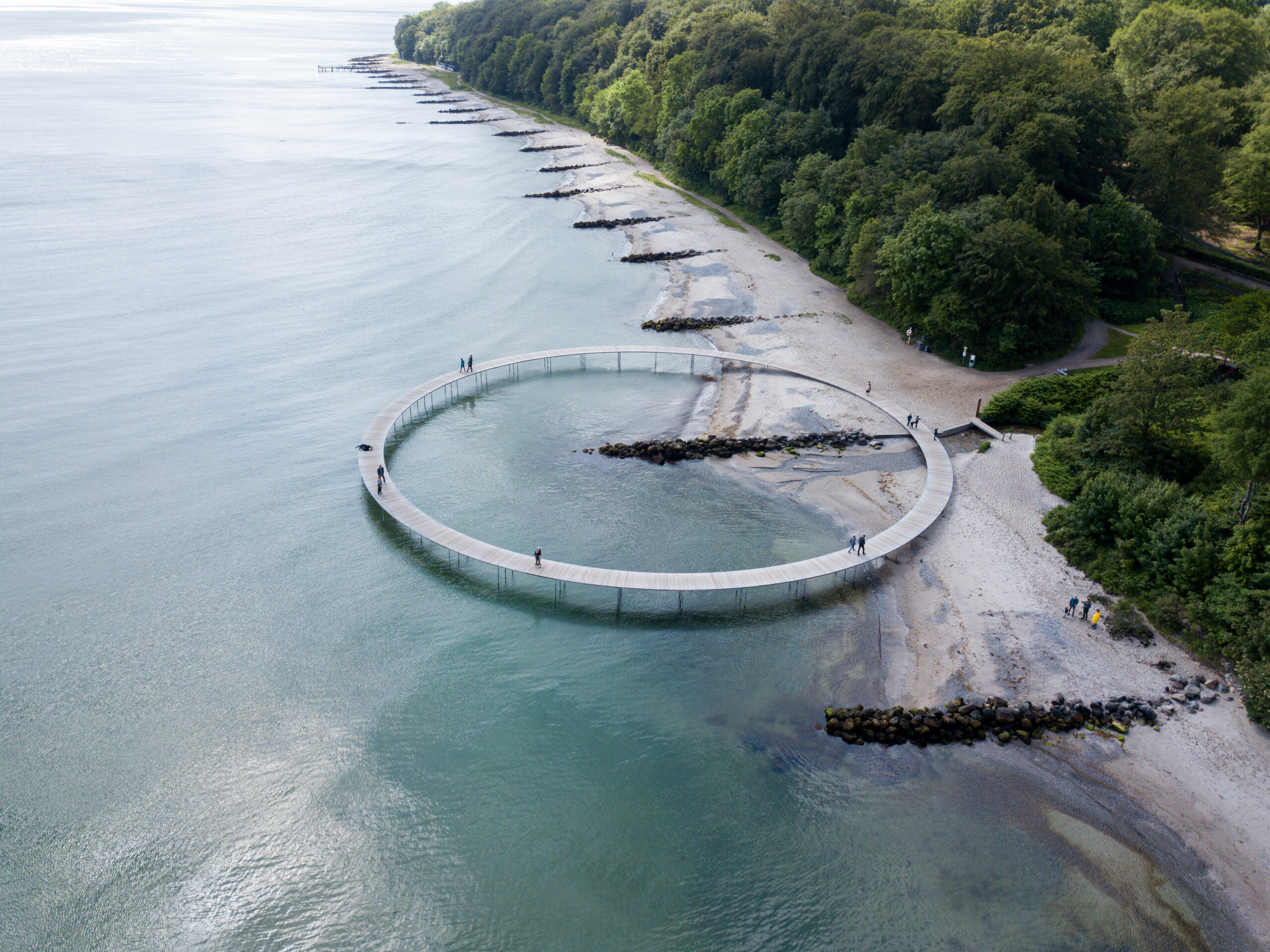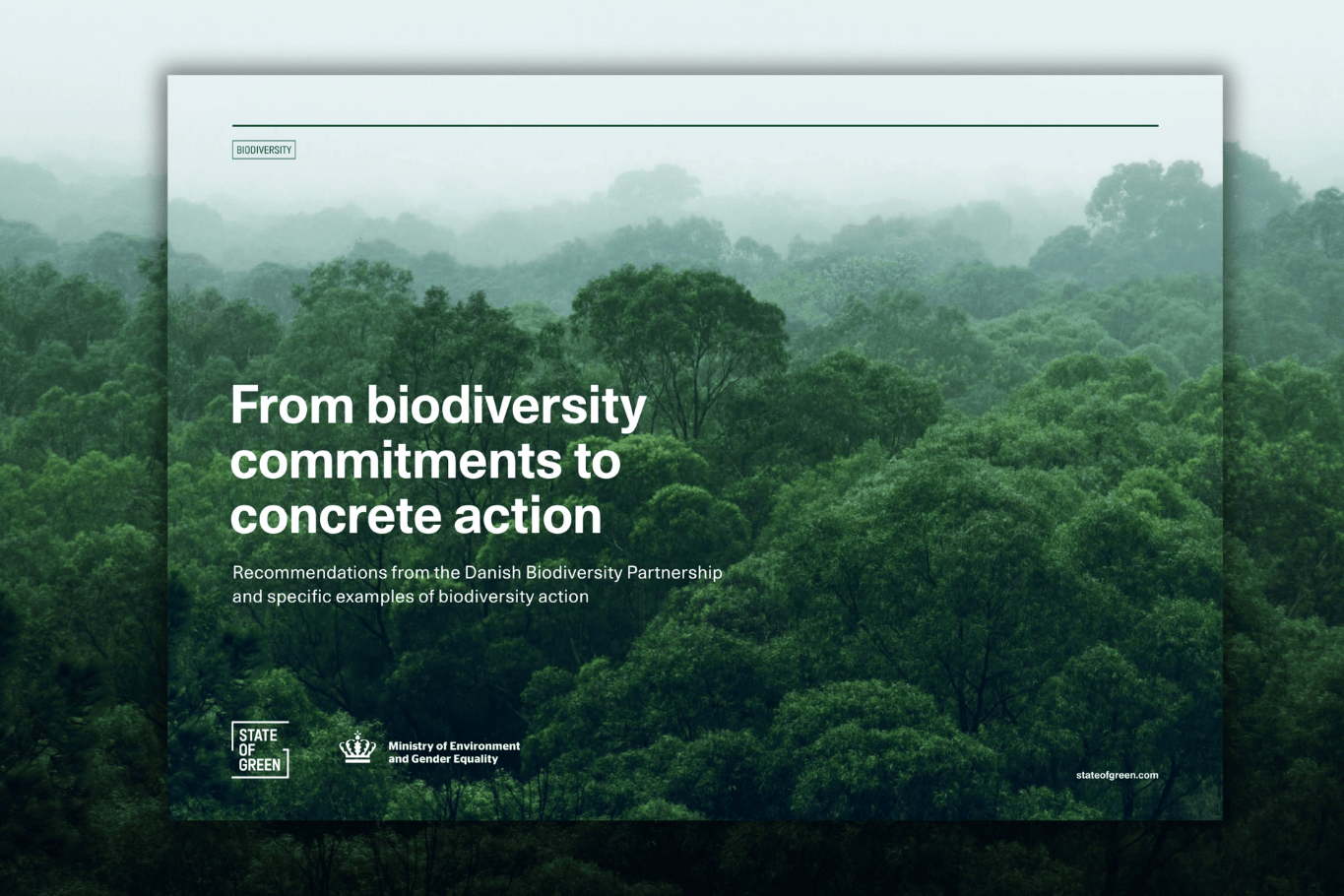From biodiversity commitments to concrete action
Download the publication to discover recommendations from the Danish Biodiversity Partnership and specific examples of biodiversity action.
Explore the publicationPerspective
Biodiversity
Biodiversity COP
Biodiversity in agriculture
+2



Download the publication to discover recommendations from the Danish Biodiversity Partnership and specific examples of biodiversity action.
Explore the publicationThe Danish Minister of Environment established the Biodiversity Partnership in response to demand from companies, industry organisations and NGOs for greater clarity and collaboration on corporate biodiversity efforts.
The partnership has been tasked with delivering recommendations to companies, authorities, and knowledge institutions to promote and support effective voluntary corporate biodiversity initiatives.
These recommendations, including a vision and mission for corporate biodiversity actions and the framework needed to support impactful efforts, were presented to Denmark’s Minister of Environment in June 2024.
EU legislation is becoming increasingly important for companies in the field of biodiversity. Among other things, companies focus on CRSD, EUDR and SFDR legislation.
The Corporate Sustainability Reporting Directive (CSRD) is an EU directive that requires large companies and listed SMEs to report on their sustainability performance. The companies must report based on the European Sustainability Reporting Standards (ESRS). The directive came into force for large, listed companies in 2024.
The EU Deforestation Regulation (EUDR) is an EU regulation that requires the production of soya, palm oil, coffee, cocoa, natural rubber, cattle and wood to take place without cleating or degrading forests. The requirements are met through so-called “due diligence” declarations and by ensuring traceability
through the value chain before goods can be marketed in or exported from EU member states.
The Sustainable Finance Disclosure Regulation (SFDR) sets out sustainability risk and sustainability impact disclosure requirements for investment products (e.g. funds and pension products) and for the companies providing the investment products. Thus, all financial products covered by the SFDR must disclose how sustainability risks are taken into account in their investment decisions and the likely impact of sustainability risks on the performance of the financial product.
The Biodiversity Partnership’s vision is for companies to contribute to solving the biodiversity crisis and help fulfil the goals of the EU Biodiversity Strategy and the global Kunming-Montreal Biodiversity Agreement.
The aim of the Partnership is to halt biodiversity loss by 2030 and achieve global biodiversity gains by 2050. To do this, companies need the ability to act effectively, supported by a robust framework to guide their efforts.
The mission of the Biodiversity Partnership is for companies to contribute to halting the loss of biodiversity by 2030 and contribute to the restoration of nature and biodiversity, both at sea and on land.
This will be achieved by:
To fulfil this vision and mission, the partnership has developed recommendations for companies, industry bodies, government, public authorities, and knowledge institutions. The goal is to make it easier for companies to address the biodiversity crisis and implement effective biodiversity initiatives.
The recommendations set a common direction for voluntary corporate biodiversity efforts, establishing a clear vision and mission for joint efforts. They apply to all companies operating in Denmark and cover both direct operations and value chains.
The recommendations should not be perceived as a detailed guide on how companies in different sectors should address biodiversity or on the specific incentive structures required. Rather, they serve as a crucial first step in guiding companies, industry bodies, governments, and knowledge institutions on how to act on the biodiversity crisis and what support is needed to strengthen corporate efforts.
Established by the government of Denmark, The Biodiversity Partnership is an example of a public-private partnership approach, bringing together 22 members from across government bodies and businesses to NGO’s and civil society.
In the summer of 2024, the Danish government established the Ministry for the Green Tripartite Agreement. The new ministry will be responsible for biodiversity efforts and will continue to work on the recommendations from the Biodiversity Partnership.
Minister:
Chair of the Danish Biodiversity Partnership:
Business organisations:
Civil organisations:
Trade unions:
Universities: